
INJ
Injective Kurs
$13,4350
+$0,13000
(+0,97 %)
Preisänderung der letzten 24 Stunden

Was denken Sie heute über den INJ-Kurs?
Teilen Sie uns Ihre Meinung mit: Daumen nach oben, wenn Sie BTC und seinen Wert positiv sehen, oder Daumen nach unten, wenn Sie ihn negativ einschätzen.
Abstimmen und Ergebnisse anzeigen
Haftungsausschluss
Der soziale Inhalt auf dieser Seite („Inhalt”), einschließlich, aber nicht beschränkt auf Tweets und Statistiken, die von LunarCrush bereitgestellt werden, stammt von Dritten und wird „wie er ist” ausschließlich zu Informationszwecken bereitgestellt. OKX übernimmt keine Garantie für die Qualität oder Richtigkeit des Inhalts, und der Inhalt spiegelt nicht die Ansichten von OKX wider. Die Inhalte dienen nicht dazu, (i) Anlageberatung oder Empfehlungen zu geben, (ii) ein Angebot oder eine Aufforderung zum Kauf, Verkauf oder Halten digitaler Vermögenswerte darzustellen oder (iii) finanzielle, buchhalterische, rechtliche oder steuerliche Beratung zu leisten. Digitale Assets, einschließlich Stablecoins und NFTs, bergen ein hohes Risiko, können stark schwanken und sogar wertlos werden. Preis und Leistung digitaler Vermögenswerte sind nicht garantiert und können sich ohne Vorankündigung ändern.<br></br>OKX gibt keine Anlage- oder Vermögensempfehlungen. Du solltest gut abwägen, ob der Handel und das Halten von digitalen Assets angesichts deiner finanziellen Situation sinnvoll ist. Bei Fragen zu deiner individuellen Situation wende dich bitte an deinen Rechts-/Steuer- oder Anlagenexperten. Weitere Einzelheiten findest du in unseren <a href="/help/terms-of-service">Nutzungsbedingungen</a> und der <a href="/help/risk-compliance-disclosure">Risikowarnung</a>. Durch die Nutzung der Website eines Drittanbieters („TPW“) akzeptieren Sie, dass jegliche Nutzung der TPW den Bedingungen der TPW unterliegt. Sofern nicht ausdrücklich schriftlich angegeben, steht OKX einschließlich seiner verbundenen Unternehmen („OKX“) in keinerlei Verbindung zum Eigentümer oder Betreiber der TPW. Sie stimmen zu, dass OKX nicht für Verluste, Schäden oder sonstige Folgen haftet, die sich aus Ihrer Nutzung der TPW ergeben. Bitte beachte, dass die Nutzung einer TPW zu einem Verlust oder einer Minderung deiner Assets führen kann. Das Produkt ist möglicherweise nicht in allen Ländern verfügbar.
Marktinformationen zu Injective
Marktkapitalisierung
Die Marktkapitalisierung wird durch Multiplikation der Umlaufmenge des Coins mit dem letzten Preis berechnet.
Marktkapitalisierung = Umlaufmenge × letzter Preis
Marktkapitalisierung = Umlaufmenge × letzter Preis
Umlaufmenge
Gesamtmenge eines Coins, die auf dem Markt öffentlich verfügbar ist.
Ranking der Marktkapitalisierung
Platzierung des Coins in Bezug auf die Marktkapitalisierung.
Allzeithoch
Höchster Preis, den ein Coin in seiner Handelsgeschichte erreicht hat.
Allzeittief
Niedrigster Preis, den ein Coin in seiner Handelshistorie erreicht hat.
Marktkapitalisierung
$1,31B
Umlaufmenge
97.727.220 INJ
97,72 % von
100.000.000 INJ
Ranking der Marktkapitalisierung
53
Prüfungen

Letzte Prüfung: 1. Sept. 2020
24-Std.-Hoch
$14,0550
24-Std.-Tief
$13,0740
Allzeithoch
$53,2000
-74,75 % (-$39,7650)
Letzte Aktualisierung: 14. März 2024
Allzeittief
$6,3420
+111,84 % (+$7,0930)
Letzte Aktualisierung: 7. Apr. 2025
Injective-Feed
Der folgende Inhalt stammt von .

ProfessorAstrones
Diese 10 beliebtesten #altcoins werden die nächste Generation von Millionären machen
Ich werde meine Anhänger in diesem Bullrun reich machen, so wie ich beim letzten Bullrun reich geworden bin
1: $INJ
Ziel: 5x bis 10x
2: $FET
Ziel: 8x bis 12x
3: $RLC
Ziel: 8x bis 12x
4: $ALGO
Ziel: 10x bis 14x
5: $WOO
Ziel: 10x bis 14x
6: $ARB
Ziel: 12x bis 16x
7: $ZIG
Ziel: 15x bis 20x
8: $COTI
Ziel: 15x bis 20x
9: $FLOKI
Ziel: 30x bis 40x
10: $MOG
Ziel: 30 bis 50x
Ich hoffe, euch hat diese Liste gefallen & lasst es mich wissen, wenn ich etwas verpasst habe!
Welcher Token fehlt in Ihrem Portfolio? #crypto
Setze ein Lesezeichen für diesen Tweet und komm in ein paar Monaten wieder, um zu sehen, wie viele X du verpasst hast.
Ich verspreche dir, du wirst es nicht bereuen, mir gefolgt zu sein.
Original anzeigen62.909
329

Santiment
🧑 💻 Hier sind die Top 10 der DeFi-Projekte von Krypto nach Entwicklung. Richtungsindikatoren repräsentieren die Ranking-Positionierung jedes Projekts seit letztem Monat:
➡️ 1) @chainlink $LINK 🥇
📈 2) @deepbookonsui $DEEP 🥈
📉 3) @defichain $DFI 🥉
➡️ 4) @synthetix_io $SNX
📈 5) @lidofinance $LDO
📈 6) @liquityprotocol $LQTY
📉 7) @coinbase $CBBTC
📈 8) @injective $INJ
📈 9) @babylonlabs_io $BABY
➡️ 10) @uniswap $UNI
Erfahren Sie mehr über die Methodik von @santimentfeed zur Abdeckung der Entwicklungsaktivitäten für über 4.000 Projekte:
Original anzeigen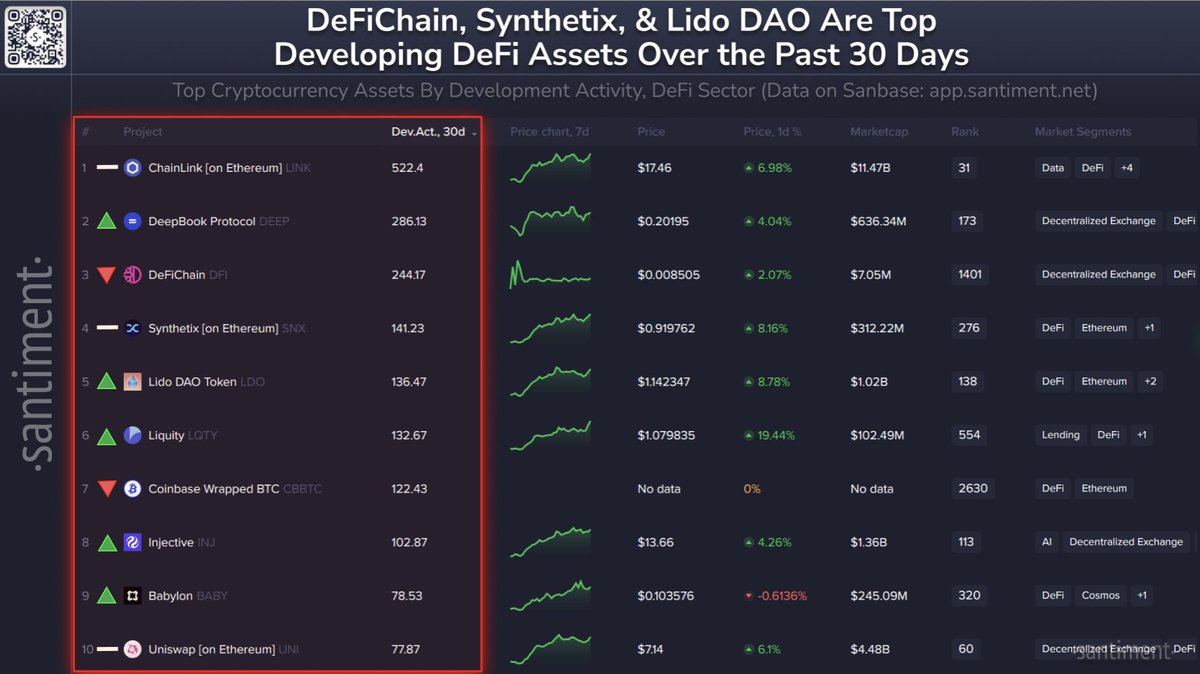
54.764
165
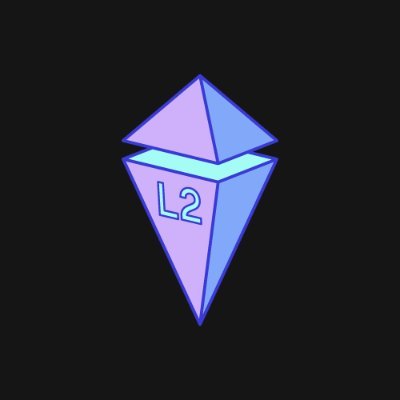
Ethereum Daily
$ETH entwickelt sich zu einem erstklassigen Kandidaten für diese Hausse. Hier ist der Grund:
👇
▫️ Preis stieg allein in der letzten Woche um 44,8%
▫️ Höchste Short-Zinsen unter den Top-Krypto-Assets (On-Chain)
▫️ Ein Ausbruch von 10% in der letzten Woche löste eine Schneeballrallye von 30%+ aus
▫️ Das Überschreiten von 2.800 $ könnte den Phase-2-Short-Squeeze auslösen
▫️ Institutionelle Akkumulation im Gange – frühzeitige Positionierung des intelligenten Geldes
ETH wird nicht ignoriert – sie wird unterschätzt.
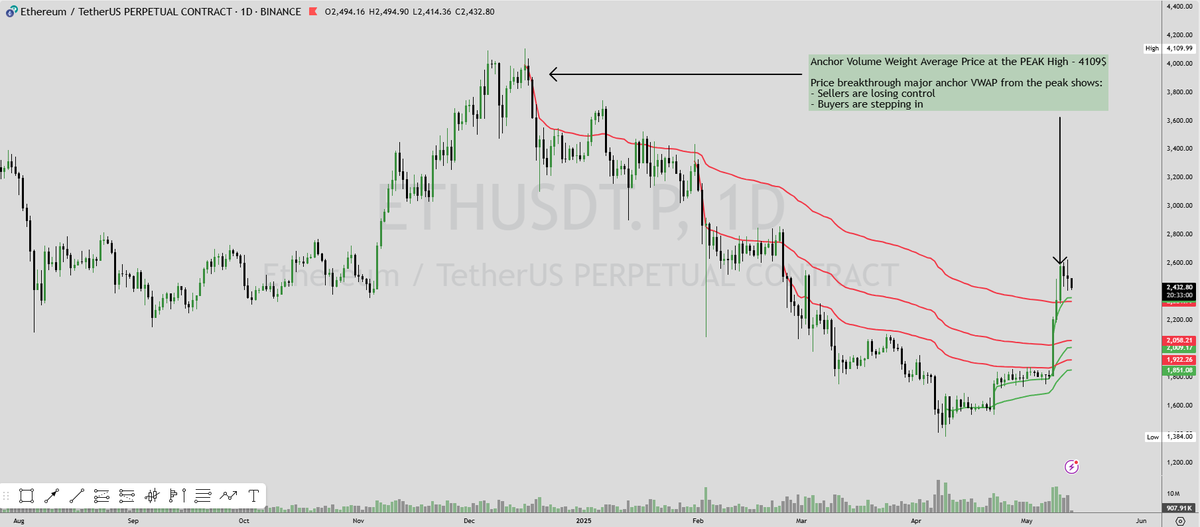
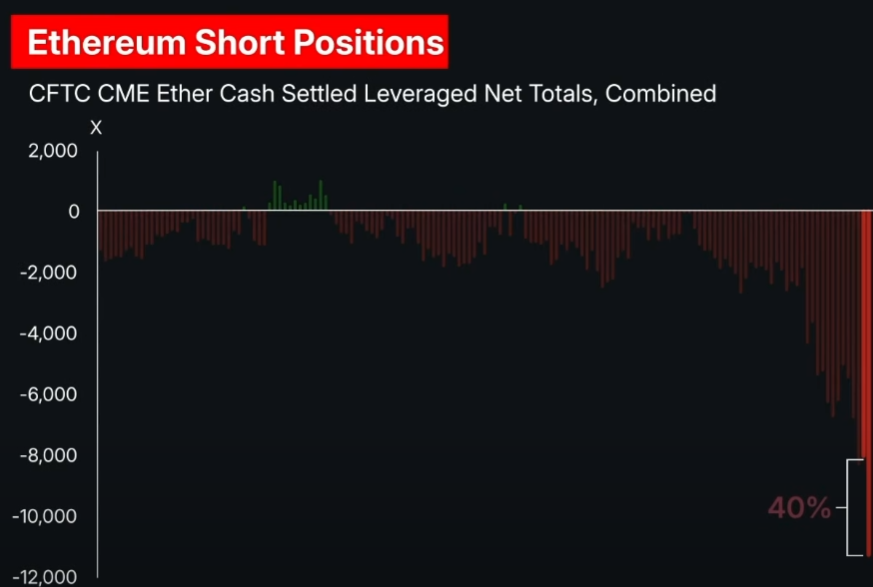
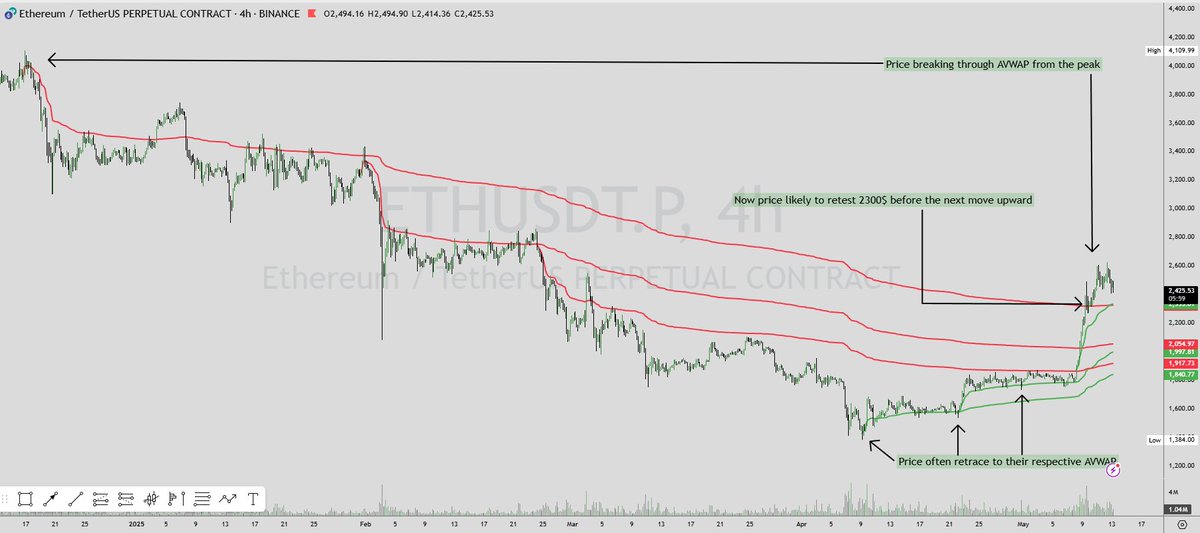
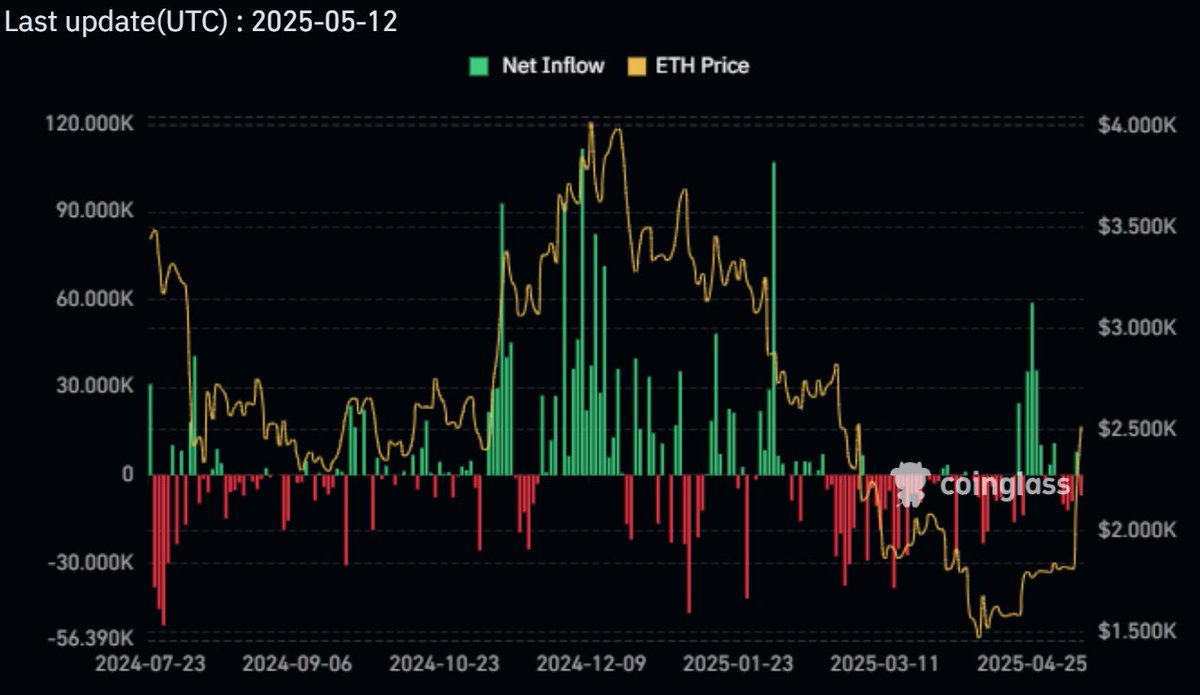

Ethereum Daily
Während sich der Markt aufheizt, zeigen Altcoins ernsthafte Stärke
Hier sind die leistungsstärksten Projekte nach wöchentlicher Token-Rendite:
▫️ @MogCoin - 109,70% - $MOG
▫️ @pepecoineth - 75,30% - $PEPE
▫️ @realflokiinu - 50,10% - $FLOKI
▫️ @arbitrum - 46,00% - $ARB
▫️ @GoGalaGames - 44,00% - $GALA
▫️ @ethena_labs - 43,60% - $ENA
▫️ @injective - 42,40% - $INJ
▫️ @ethereum - 40,00% - $ETH
▫️ @Uniswap - 39,30% - $UNI
▫️ @nearprotocol - 35,70% - $NEAR
Die Dynamik nimmt zu!

80.932
18
INJ-Rechner


Injective Preisentwicklung in USD
Der aktuelle Preis von Injective liegt bei $13,4350. In den letzten 24 Stunden ist Injective um +0,98 % gestiegen. Der Coin hat derzeit eine Umlaufmenge von 97.727.220 INJ und eine maximale Versorgung von 100.000.000 INJ, was eine vollständig verwässerte Marktkapitalisierung von $1,31B ergibt. In der Rangliste der Marktkapitalisierung belegt der Injective-Coin derzeit die Position 53. Der Injective/USD-Kurs wird in Echtzeit aktualisiert.
Heute
+$0,13000
+0,97 %
7 Tage
+$3,8570
+40,26 %
30 Tage
+$5,0850
+60,89 %
3 Monate
-$1,6850
-11,15 %
Beliebte Injective-Konvertierungen
Letzte Aktualisierung: 14.05.2025, 18:51
| 1 INJ in USD | 13,4510 $ |
| 1 INJ in EUR | 11,9521 € |
| 1 INJ in PHP | 750,21 ₱ |
| 1 INJ in IDR | 222.588,1 Rp |
| 1 INJ in GBP | 10,0747 £ |
| 1 INJ in CAD | 18,7113 $ |
| 1 INJ in AED | 49,4062 AED |
| 1 INJ in VND | 348.923,5 ₫ |
Über Injective (INJ)
Die angegebene Bewertung ist eine aggregierte Bewertung, die von OKX aus den angegebenen Quellen gesammelt wurde und nur zu Informationszwecken dient. OKX übernimmt keine Garantie für die Qualität oder Richtigkeit der Bewertungen. Es ist nicht beabsichtigt, (i) eine Anlageberatung oder -empfehlung, (ii) ein Angebot oder eine Aufforderung zum Kauf, Verkauf oder Halten von digitalen Vermögenswerten oder (iii) eine Finanz-, Buchhaltungs-, Rechts- oder Steuerberatung anzubieten. Digitale Vermögenswerte, einschließlich Stablecoins und NFTs, sind mit einem hohen Risiko behaftet, ihr Wert kann stark schwanken und sie können sogar wertlos werden. Der Preis und die Wertentwicklung der digitalen Vermögenswerte sind nicht garantiert und können sich ohne vorherige Ankündigung ändern. Ihre digitalen Vermögenswerte sind nicht durch eine Versicherung gegen mögliche Verluste abgedeckt. Historische Renditen sind kein Indikator für zukünftige Renditen. OKX garantiert keine Rendite, Rückzahlung von Kapital oder Zinsen. OKX gibt keine Anlage- oder Vermögensempfehlungen ab. Sie sollten sorgfältig abwägen, ob der Handel mit oder das Halten von digitalen Vermögenswerten angesichts Ihrer finanziellen Situation für Sie geeignet ist. Bitte konsultieren Sie Ihren Rechts-/Steuer-/Anlageexperten, wenn Sie Fragen bezüglich Ihrer individuellen Gegebenheiten haben.
Mehr anzeigen
- Offizielle Website
- Github
- Block Explorer
Über Websites von Drittanbietern
Über Websites von Drittanbietern
Durch die Nutzung der Website eines Drittanbieters (Third-Party Website, „TPW“) akzeptieren Sie, dass jegliche Nutzung der TPW den Bedingungen der TPW unterliegt und durch diese geregelt wird. Sofern nicht ausdrücklich schriftlich anders angegeben, stehen OKX und seine verbundenen Unternehmen („OKX“) in keiner Weise mit dem Eigentümer oder Betreiber der TPW in Verbindung. Sie erklären sich damit einverstanden, dass OKX nicht für Verluste, Schäden und sonstige Folgen haftet, die sich aus Ihrer Nutzung der TPW ergeben. Bitte beachten Sie, dass die Nutzung einer TPW zu einem Verlust oder einer Minderung Ihres Vermögens führen kann.
Häufig gestellte Fragen zum Injective-Preis
Wie viel ist 1 Injective heute wert?
Aktuell ist ein Injective $13,4350 wert. Wenn Sie Antworten und Einblicke in das Preisgeschehen von Injective suchen, sind Sie hier genau an der richtigen Stelle. Entdecken Sie die neuesten Injective-Charts und handeln Sie verantwortungsbewusst mit OKX.
Was ist eine Kryptowährung?
Kryptowährungen, wie etwa Injective, sind digitale Vermögenswerte, die auf einem öffentlichen Hauptbuch namens Blockchains betrieben werden. Erfahren Sie mehr über die auf OKX angebotenen Coins und Tokens sowie deren unterschiedlichen Eigenschaften, einschließlich Live-Preisen und Charts in Echtzeit.
Wann wurden Kryptowährungen erfunden?
Dank der Finanzkrise von 2008 ist das Interesse an einem dezentralen Finanzwesen rasant gestiegen. Bitcoin bot als sicherer digitaler Vermögenswert auf einem dezentralen Netzwerk eine neuartige Lösung. Seitdem wurden auch viele andere Token, wie etwa Injective, erstellt.
Wird der Preis von Injective heute steigen?
Auf unserer Injective-Seite für Preisprognosen finden Sie Prognosen zukünftiger Preise und können Ihre Preisziele bestimmen.
ESG-Offenlegung
ESG-Regulierungen (Umwelt, Soziales und Governance) für Krypto-Vermögenswerte zielen darauf ab, ihre Umweltauswirkungen (z. B. energieintensives Mining) zu adressieren, Transparenz zu fördern und ethische Governance-Praktiken zu gewährleisten, um die Krypto-Industrie mit breiteren Nachhaltigkeits- und gesellschaftlichen Zielen in Einklang zu bringen. Diese Vorschriften fördern die Compliance mit Standards, die Risiken mindern und das Vertrauen in digitale Vermögenswerte stärken.
Details zum Vermögenswert
Name
OKcoin Europe LTD
Kennung der relevanten juristischen Person
54930069NLWEIGLHXU42
Name des Krypto-Vermögenswerts
Injective Token
Konsensmechanismus
Injective Token is present on the following networks: binance_smart_chain, cosmos, ethereum.
Binance Smart Chain (BSC) uses a hybrid consensus mechanism called Proof of Staked Authority (PoSA), which combines elements of Delegated Proof of Stake (DPoS) and Proof of Authority (PoA). This method ensures fast block times and low fees while maintaining a level of decentralization and security. Core Components 1. Validators (so-called “Cabinet Members”): Validators on BSC are responsible for producing new blocks, validating transactions, and maintaining the network’s security. To become a validator, an entity must stake a significant amount of BNB (Binance Coin). Validators are selected through staking and voting by token holders. There are 21 active validators at any given time, rotating to ensure decentralization and security. 2. Delegators: Token holders who do not wish to run validator nodes can delegate their BNB tokens to validators. This delegation helps validators increase their stake and improves their chances of being selected to produce blocks. Delegators earn a share of the rewards that validators receive, incentivizing broad participation in network security. 3. Candidates: Candidates are nodes that have staked the required amount of BNB and are in the pool waiting to become validators. They are essentially potential validators who are not currently active but can be elected to the validator set through community voting. Candidates play a crucial role in ensuring there is always a sufficient pool of nodes ready to take on validation tasks, thus maintaining network resilience and decentralization. Consensus Process 4. Validator Selection: Validators are chosen based on the amount of BNB staked and votes received from delegators. The more BNB staked and votes received, the higher the chance of being selected to validate transactions and produce new blocks. The selection process involves both the current validators and the pool of candidates, ensuring a dynamic and secure rotation of nodes. 5. Block Production: The selected validators take turns producing blocks in a PoA-like manner, ensuring that blocks are generated quickly and efficiently. Validators validate transactions, add them to new blocks, and broadcast these blocks to the network. 6. Transaction Finality: BSC achieves fast block times of around 3 seconds and quick transaction finality. This is achieved through the efficient PoSA mechanism that allows validators to rapidly reach consensus. Security and Economic Incentives 7. Staking: Validators are required to stake a substantial amount of BNB, which acts as collateral to ensure their honest behavior. This staked amount can be slashed if validators act maliciously. Staking incentivizes validators to act in the network's best interest to avoid losing their staked BNB. 8. Delegation and Rewards: Delegators earn rewards proportional to their stake in validators. This incentivizes them to choose reliable validators and participate in the network’s security. Validators and delegators share transaction fees as rewards, which provides continuous economic incentives to maintain network security and performance. 9. Transaction Fees: BSC employs low transaction fees, paid in BNB, making it cost-effective for users. These fees are collected by validators as part of their rewards, further incentivizing them to validate transactions accurately and efficiently.
The Cosmos network uses the Cosmos SDK, a modular framework that enables developers to build custom, application-specific blockchains. Cosmos SDK chains rely on Tendermint Core, a Byzantine Fault Tolerant (BFT) Proof of Stake (PoS) consensus engine that supports interoperability and fast transaction finality. Core Components: 1. Tendermint BFT Consensus with Proof of Stake: Validator Selection: Cosmos validators are selected based on the amount of ATOM they stake or receive from delegators. These validators participate in block proposal and validation through a two-thirds majority voting system. Security Threshold: Tendermint BFT ensures network security as long as fewer than one-third of validators act maliciously. 2. Modular Cosmos SDK Framework: Inter-Blockchain Communication (IBC): The Cosmos SDK supports IBC, allowing seamless interoperability between Cosmos-based blockchains. Application Blockchain Interface (ABCI): This interface separates the consensus layer from the application layer, enabling developers to implement custom logic without modifying the consensus engine.
The Ethereum network uses a Proof-of-Stake Consensus Mechanism to validate new transactions on the blockchain. Core Components 1. Validators: Validators are responsible for proposing and validating new blocks. To become a validator, a user must deposit (stake) 32 ETH into a smart contract. This stake acts as collateral and can be slashed if the validator behaves dishonestly. 2. Beacon Chain: The Beacon Chain is the backbone of Ethereum 2.0. It coordinates the network of validators and manages the consensus protocol. It is responsible for creating new blocks, organizing validators into committees, and implementing the finality of blocks. Consensus Process 1. Block Proposal: Validators are chosen randomly to propose new blocks. This selection is based on a weighted random function (WRF), where the weight is determined by the amount of ETH staked. 2. Attestation: Validators not proposing a block participate in attestation. They attest to the validity of the proposed block by voting for it. Attestations are then aggregated to form a single proof of the block’s validity. 3. Committees: Validators are organized into committees to streamline the validation process. Each committee is responsible for validating blocks within a specific shard or the Beacon Chain itself. This ensures decentralization and security, as a smaller group of validators can quickly reach consensus. 4. Finality: Ethereum 2.0 uses a mechanism called Casper FFG (Friendly Finality Gadget) to achieve finality. Finality means that a block and its transactions are considered irreversible and confirmed. Validators vote on the finality of blocks, and once a supermajority is reached, the block is finalized. 5. Incentives and Penalties: Validators earn rewards for participating in the network, including proposing blocks and attesting to their validity. Conversely, validators can be penalized (slashed) for malicious behavior, such as double-signing or being offline for extended periods. This ensures honest participation and network security.
Anreizmechanismen und anfallende Gebühren
Injective Token is present on the following networks: binance_smart_chain, cosmos, ethereum.
Binance Smart Chain (BSC) uses the Proof of Staked Authority (PoSA) consensus mechanism to ensure network security and incentivize participation from validators and delegators. Incentive Mechanisms 1. Validators: Staking Rewards: Validators must stake a significant amount of BNB to participate in the consensus process. They earn rewards in the form of transaction fees and block rewards. Selection Process: Validators are selected based on the amount of BNB staked and the votes received from delegators. The more BNB staked and votes received, the higher the chances of being selected to validate transactions and produce new blocks. 2. Delegators: Delegated Staking: Token holders can delegate their BNB to validators. This delegation increases the validator's total stake and improves their chances of being selected to produce blocks. Shared Rewards: Delegators earn a portion of the rewards that validators receive. This incentivizes token holders to participate in the network’s security and decentralization by choosing reliable validators. 3. Candidates: Pool of Potential Validators: Candidates are nodes that have staked the required amount of BNB and are waiting to become active validators. They ensure that there is always a sufficient pool of nodes ready to take on validation tasks, maintaining network resilience. 4. Economic Security: Slashing: Validators can be penalized for malicious behavior or failure to perform their duties. Penalties include slashing a portion of their staked tokens, ensuring that validators act in the best interest of the network. Opportunity Cost: Staking requires validators and delegators to lock up their BNB tokens, providing an economic incentive to act honestly to avoid losing their staked assets. Fees on the Binance Smart Chain 5. Transaction Fees: Low Fees: BSC is known for its low transaction fees compared to other blockchain networks. These fees are paid in BNB and are essential for maintaining network operations and compensating validators. Dynamic Fee Structure: Transaction fees can vary based on network congestion and the complexity of the transactions. However, BSC ensures that fees remain significantly lower than those on the Ethereum mainnet. 6. Block Rewards: Incentivizing Validators: Validators earn block rewards in addition to transaction fees. These rewards are distributed to validators for their role in maintaining the network and processing transactions. 7. Cross-Chain Fees: Interoperability Costs: BSC supports cross-chain compatibility, allowing assets to be transferred between Binance Chain and Binance Smart Chain. These cross-chain operations incur minimal fees, facilitating seamless asset transfers and improving user experience. 8. Smart Contract Fees: Deployment and Execution Costs: Deploying and interacting with smart contracts on BSC involves paying fees based on the computational resources required. These fees are also paid in BNB and are designed to be cost-effective, encouraging developers to build on the BSC platform.
The Cosmos network incentivizes both validators and delegators to secure the network through staking rewards, funded by transaction fees and newly minted ATOM. Incentive Mechanisms: 1. Staking Rewards for Validators and Delegators: ATOM Rewards: Validators earn staking rewards in ATOM tokens for participating in consensus, with rewards shared with delegators who stake ATOM through delegation. 2. Slashing for Accountability: Penalties for Misconduct: Validators who act maliciously, such as double-signing or staying offline, face slashing penalties, which remove a portion of their staked ATOM. Delegators may also experience slashing if their chosen validator is penalized, encouraging careful selection of trustworthy validators. Applicable Fees: 1. Transaction Fees: User-Paid Fees in ATOM: All transactions on the Cosmos Hub incur fees paid in ATOM, compensating validators for transaction processing and helping to prevent network spam. 2. Customizable Fee Model: Custom Token Fees: Cosmos SDK allows individual chains to define their own transaction fees in tokens other than ATOM, supporting varied application requirements within the ecosystem.
Ethereum, particularly after transitioning to Ethereum 2.0 (Eth2), employs a Proof-of-Stake (PoS) consensus mechanism to secure its network. The incentives for validators and the fee structures play crucial roles in maintaining the security and efficiency of the blockchain. Incentive Mechanisms 1. Staking Rewards: Validator Rewards: Validators are essential to the PoS mechanism. They are responsible for proposing and validating new blocks. To participate, they must stake a minimum of 32 ETH. In return, they earn rewards for their contributions, which are paid out in ETH. These rewards are a combination of newly minted ETH and transaction fees from the blocks they validate. Reward Rate: The reward rate for validators is dynamic and depends on the total amount of ETH staked in the network. The more ETH staked, the lower the individual reward rate, and vice versa. This is designed to balance the network's security and the incentive to participate. 2. Transaction Fees: Base Fee: After the implementation of Ethereum Improvement Proposal (EIP) 1559, the transaction fee model changed to include a base fee that is burned (i.e., removed from circulation). This base fee adjusts dynamically based on network demand, aiming to stabilize transaction fees and reduce volatility. Priority Fee (Tip): Users can also include a priority fee (tip) to incentivize validators to include their transactions more quickly. This fee goes directly to the validators, providing them with an additional incentive to process transactions efficiently. 3. Penalties for Malicious Behavior: Slashing: Validators face penalties (slashing) if they engage in malicious behavior, such as double-signing or validating incorrect information. Slashing results in the loss of a portion of their staked ETH, discouraging bad actors and ensuring that validators act in the network's best interest. Inactivity Penalties: Validators also face penalties for prolonged inactivity. This ensures that validators remain active and engaged in maintaining the network's security and operation. Fees Applicable on the Ethereum Blockchain 1. Gas Fees: Calculation: Gas fees are calculated based on the computational complexity of transactions and smart contract executions. Each operation on the Ethereum Virtual Machine (EVM) has an associated gas cost. Dynamic Adjustment: The base fee introduced by EIP-1559 dynamically adjusts according to network congestion. When demand for block space is high, the base fee increases, and when demand is low, it decreases. 2. Smart Contract Fees: Deployment and Interaction: Deploying a smart contract on Ethereum involves paying gas fees proportional to the contract's complexity and size. Interacting with deployed smart contracts (e.g., executing functions, transferring tokens) also incurs gas fees. Optimizations: Developers are incentivized to optimize their smart contracts to minimize gas usage, making transactions more cost-effective for users. 3. Asset Transfer Fees: Token Transfers: Transferring ERC-20 or other token standards involves gas fees. These fees vary based on the token's contract implementation and the current network demand.
Beginn des Zeitraums, auf die sich die Angaben beziehen
2024-04-20
Ende des Zeitraums, auf die sich die Angaben beziehen
2025-04-20
Energiebericht
Energieverbrauch
1470.57158 (kWh/a)
Quellen und Verfahren im Bezug auf den Energieverbrauch
The energy consumption of this asset is aggregated across multiple components:
To determine the energy consumption of a token, the energy consumption of the network(s) binance_smart_chain, cosmos, ethereum is calculated first. Based on the crypto asset's gas consumption per network, the share of the total consumption of the respective network that is assigned to this asset is defined. When calculating the energy consumption, we used - if available - the Functionally Fungible Group Digital Token Identifier (FFG DTI) to determine all implementations of the asset of question in scope and we update the mappings regulary, based on data of the Digital Token Identifier Foundation.
INJ-Rechner





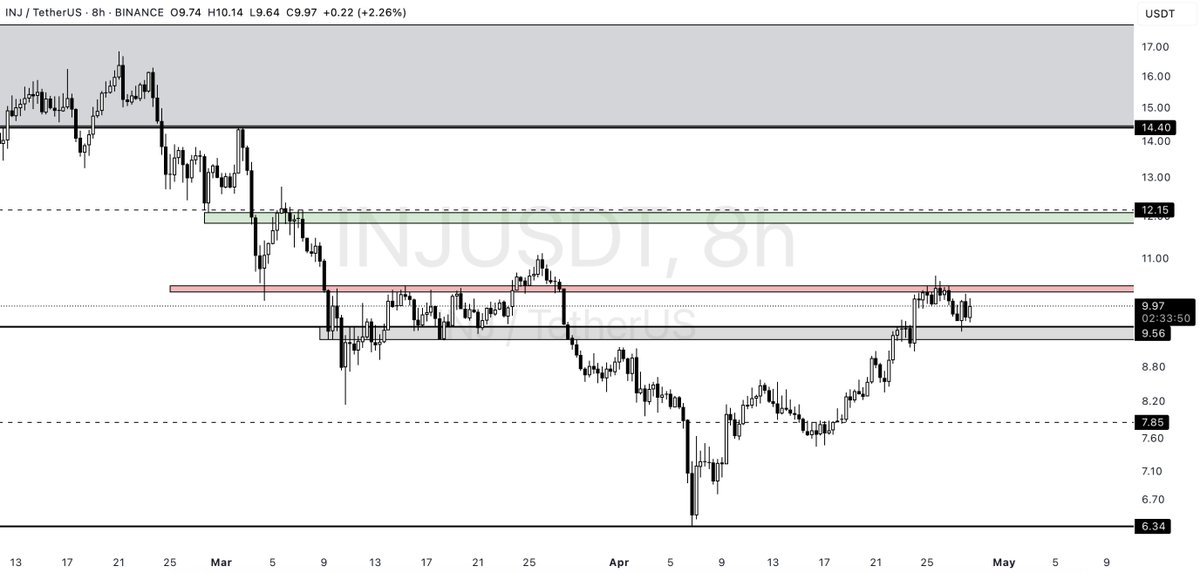

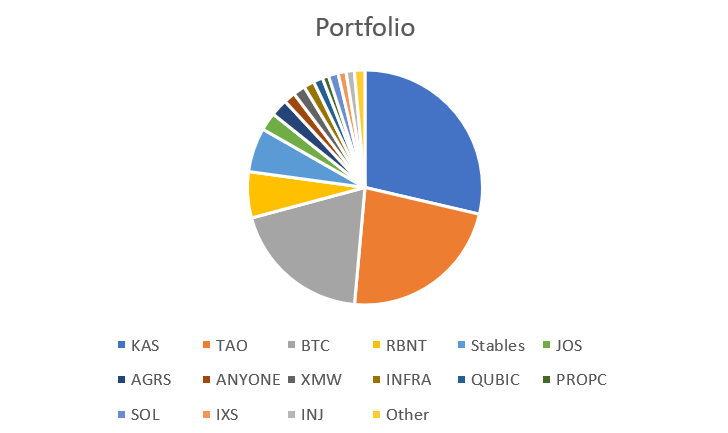



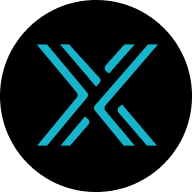








Soziales